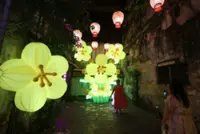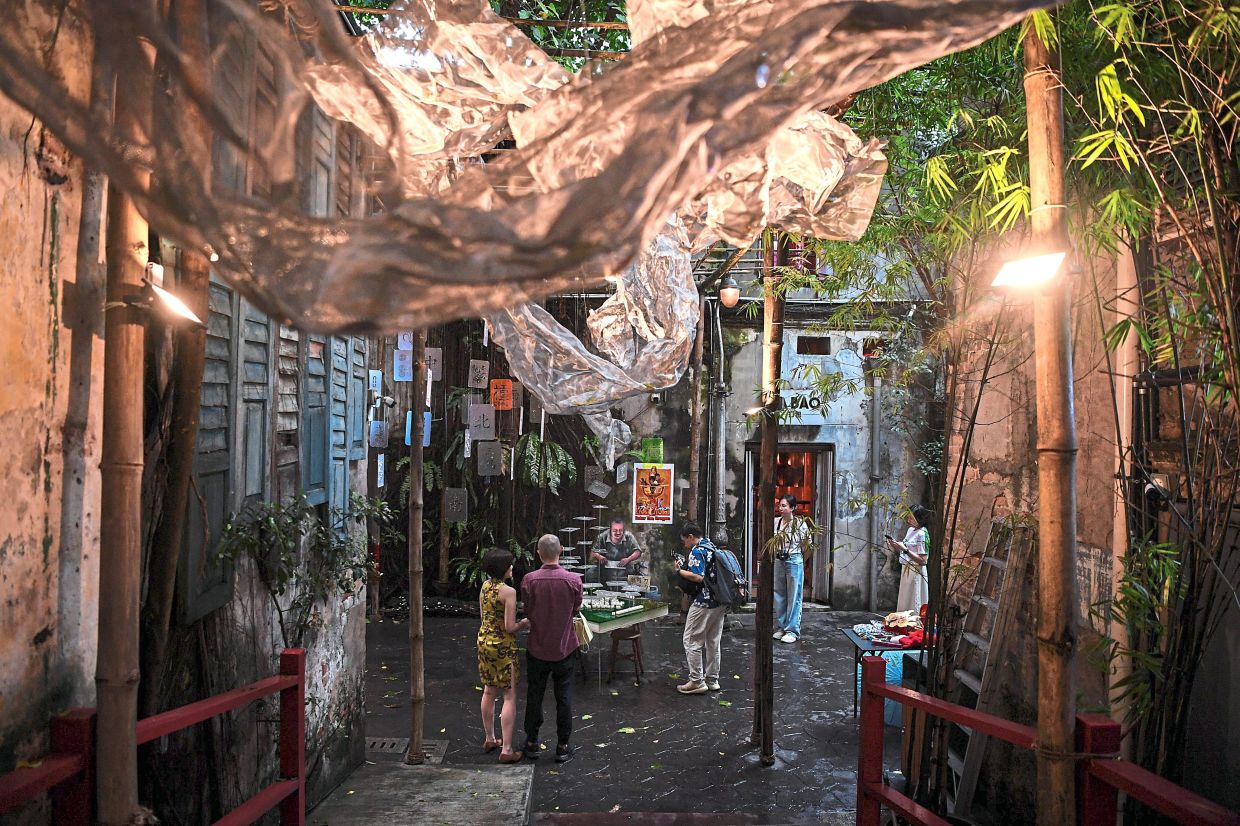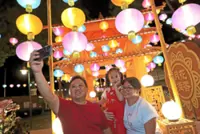Mahjong centrepiece beckons visitors to play the game of luck and skill.
KWAI Chai Hong, a heritage lane in the heart of Kuala Lumpur’s Chinatown, is ushering in Chinese New Year with a tribute to mahjong, a tile-based game developed during the Qing Dynasty in the 19th century in China.
The “Rise of the Dragon” art installation was made in collaboration with Johor Baru-based artists Wong Jia Min and Lee Chaer Shean from Plus+Plus design studio.
The 28-year-old architects also designed a centrepiece: a mahjong game set in the heart of the cul-de-sac, with the silhouette of a dragon traversing above.
Bai Chuan Management Sdn Bhd managing partner Zeen Chang said the installation was not emphasising the gambling aspect but rather, the spirit of continuing the legacy of traditional Chinese games passed down through generations since the Qing Dynasty.
“It also serves to showcase Chinese traditions to visitors, allowing them to learn more about our culture during the Chinese New Year.”
Chang said the company wanted to be different in a game- changing way, given that most shopping complexes and tourist spots were already adorned with dragon-shaped installations to mark the Year of the Dragon.
“Dragon themes are common and can be spotted anywhere during this festive season, in addition to lanterns and Chinese calligraphy.
“As such, we wanted to have something different by incorporating ideas from several other local artists.
“Of the many ideas presented to us, we chose mahjong as the theme of our Chinese New Year celebration, without forgetting this year’s main character, the dragon,” she added.
Nostalgia from the 1960s
Media representatives and other guests were given the opportunity to visit the lane in conjunction with the launch of the exhibition organised by Bai Chuan Management, which manages the restoration of Kwai Chai Hong.
Kwai Chai Hong or “Little Ghost Lane” in Cantonese, is a 36m-long path tucked between Jalan Petaling and Jalan Sultan.
When you enter the area, you are greeted by the colourful “love bridge” with impressive murals that showcase characters in The House of 72 Tenants, a film produced by Shaw Brothers that portrayed daily life in the 1960s.
Long neglected and in bad shape, the heritage lane had been given a major makeover under a five-year restoration project undertaken by Bai Chuan Management since 2019.
At the entrance, a table with 144 cubes for a mahjong game beckons visitors.
The table is enhanced with a “staircase” resembling the game Uno.
The mahjong tiles with intricate designs and vibrant colours have deep meaning in Chinese tradition and folklore.
Dragons are mythical creatures strongly associated with Chinese New Year.
Chang said the importance of mahjong to the Chinese community was akin to the significance of chess in western countries, as reported by Bernama.
“Mahjong was once a favourite pastime among the Chinese.
“It was traditionally an activity for all ages, fostering bonding, and it is even said to improve cognitive performance.
“The intricate game, requiring a mix of tiles to form unique combinations, serves as a metaphor for our nation’s strength in diversity and unity, something Kwai Chai Hong is always passionate about,” Chan added.
Awakening the ‘dragon’
Chang said the “Rise of the Dragon” installation was aptly named to represent the beast which had hibernated for a long time and finally gathered enough strength to take on the new year with renewed vitality and power.
“The start of the mahjong game is when the tiles are mixed in a fluid circular motion and rhythm, like the ascension of the dragon’s spirit awakening from its slumber,” she said.
Wong said the game was played in rounds with reshuffling mirroring the act of resetting the year, symbolising prosperity, union, harmony and peace.
“The mahjong panels and wire mesh collectively craft the silhouette of a dragon awakening from its long slumber as winter ends and soaring into the sky, representing hope for a better and more prosperous beginning in the Year of the Dragon,” she said.
On showcasing a nation’s diversity and unity, she said, “This installation is more than an artistic display, it is a tangible representation of hope, inviting individuals to contemplate and embrace a new life chapter as they welcome the Year of the Dragon.”
Played by a maximum of four players at a time, this highly social game celebrates togetherness, and requires both luck and skill to win.
The loud clacking of the tiles is said to mimic the sound of firecrackers that are set off to drive away misfortune.
Kwai Chai Hong opens to the public daily from 9am to midnight and “The Rise of the Dragon” installation will be available until March 3.









